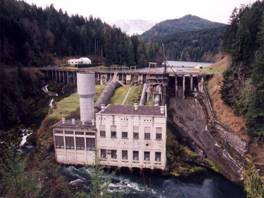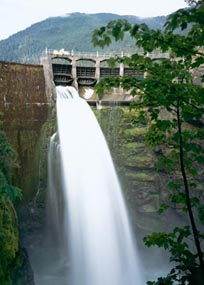At the edge of the vast Pacific Northwest lies the Olympic National Park, home to the largest unmanaged herd of Roosevelt Elk in the world and the Elwha River Restoration Project. Since the early 1900s the Elwha has been a residence for two dams, and the river that is home to all five species of Pacific salmon, altered. Current runs of salmon have dwindled to just about 3,000. A new life, however is about to return to this river system.
After nearly 100 years the Elwha’s two dams are up for removal. Slated to be the largest dam removal project ever in this country, it is estimated that salmon runs of 300,000 will return to over 70 miles of river and stream over the course of 30 years. Salmon, a common food in the Pacific Northwest, are an essential part of both local culture and biodiversity. For starters, salmon are an important part of the Lower Elwha Klallam Tribe’s culture and consequently, the tribe is a major contributor to dam restoration efforts. Removal will allow them to once again recognize age old traditions. For the larger forest, however, salmon provide a food source for multiple animals, including bears and eagles. Additionally, “after spawning [salmon] carcasses supply the ecosystem with nitrogen and phosphorus” (Popular Mechanics). According to the National Park Service the project is also good for other parts of the ecosystem. They offer that, “Removing the dams will reestablish the natural flow of sediment from the mountains to the coast—rebuilding wetlands, beaches and the estuary at the river’s mouth.”
Removing a dam is no small project; in fact this one is nearly 30 years in the making. In addition to the initial planning, multiple projects have been undertaken over the past couple of years including water treatment facilities, engineered log jams and the planting of native vegetation. These are each essential parts of the process, ensuring both the success of the project, and the river’s ability to continue to supply clean water to local people. After all that, the dams themselves could take up to three years to remove fully.
As a Washington native, lover of salmon, and a Christian always looking to be more involved in caring for God’s amazing creation, I cannot help but to be excited about this project. As we restore rivers, habitats and ecosystems a more bounteous creation emerges; stronger salmon runs, increased wildlife, renewed beaches and a tiny bit of return to balance. For me, personally, the bigger picture of hunger is not just about what a single person eats, but about how creation interacts such that native food exists, thrives and supplies the nutrients for our lives.
You can learn more about the Elwha River Restoration Project here (these are the sites I used to write this blog):
- http://www.popularmechanics.com/science/environment/water/2294301
- http://www.nps.gov/olym/naturescience/loader.cfm?csModule=security/getfile&pageid=360254&bypasswarning=1
- http://www.nps.gov/olym/naturescience/elwha-ecosystem-restoration.htm
~ Lana Lile


